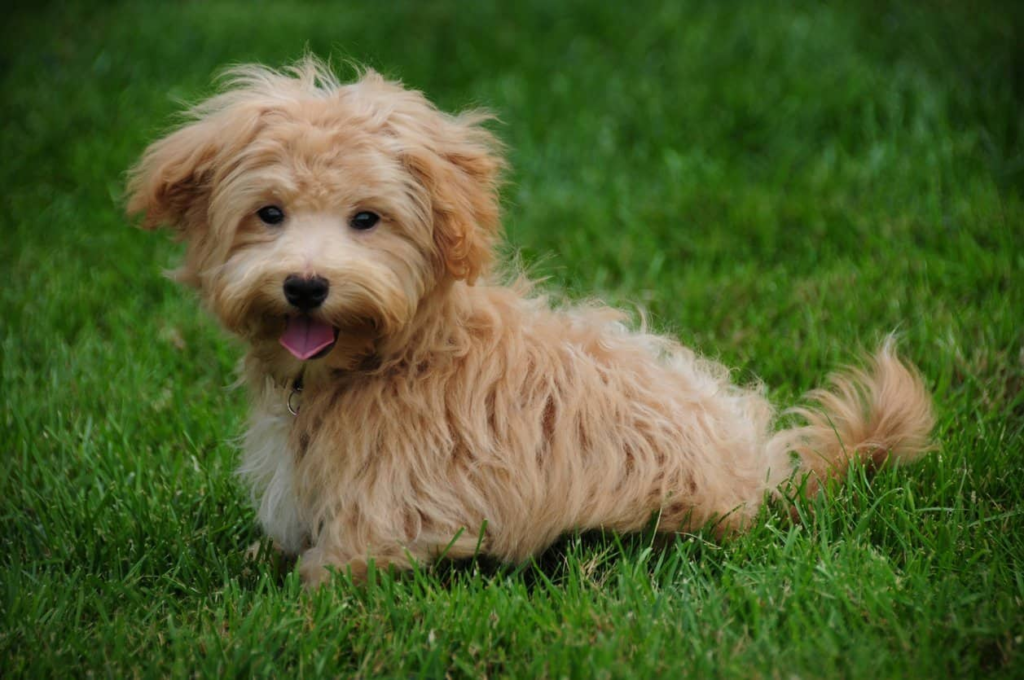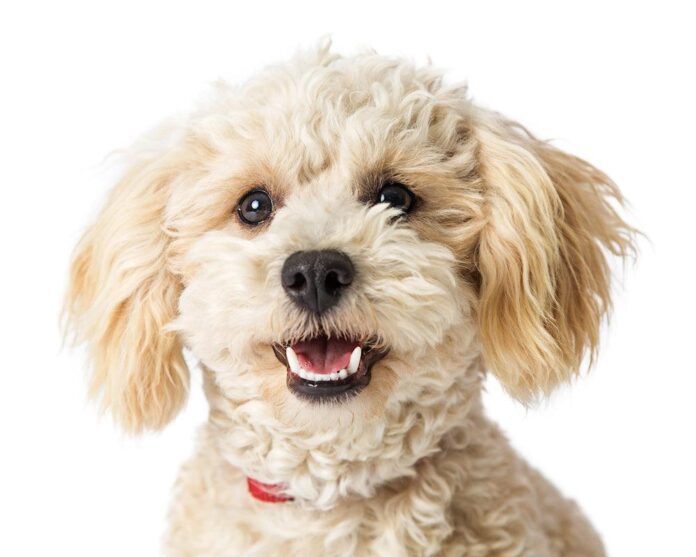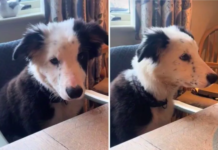Last Updated on August 20, 2023 by Fumipets
Peekapoo: The Complete Care Guide
Peekapoo is an introduction to the Peekapoo breed, a cross between a Pekingese and a Poodle. This article explores the origin, characteristics, temperament, care requirements, and suitability of Peekapoos as pets.
It offers valuable insights for individuals interested in learning more about this hybrid dog breed.
Peekapoo
One of the first “designer” or hybrid dog breeds is the Peekapoo. The first Pekingese-poodle hybrids were created in the 1950s to satisfy the need for little dogs with “hypoallergenic” coats that shed very little.
Adult Peekapoos are petite in height, reaching less than 11 inches tall and weighing between 4 and 20 pounds, much like their parent breeds. The smallest breed is known as a teacup Peekapoo and is a Pekingese mixed with a tiny poodle. But these dogs make up for their size shortcoming with personality.
“Pekingese are independent and stoic, and poodles like to be the life of the party; Pekingese are more aloof and poodles can be quite clingy,” said Jennifer Hart, founder of Greensboro, North Carolina-based Hart-2-Heart Rescue. “A Pekingese and a poodle mix can result in a fairly balanced dog that is loving but also independent.”
The Peekapoo isn’t scared to raise the alarm to let people know when outsiders are around since Pekingese were trained to protect palaces and rulers in Asia. The saying, “their bark is bigger than their bite,” applies to this breed since they are outspoken and think it is their duty to serve as their owners’ personal alarm system, according to Hart.
The Peekapoo is devoted and affectionate at home. Because of his poodle ancestry, he is a low-energy breed that is the epitome of the lapdog and enjoys continuous company. He’ll be the ideal canine companion for elderly people.
Appearance
As a mixed-breed dog, the Peekapoo lacks a formal breed standard that specifies how the puppies should look. In actuality, they may have a wide range of looks that include characteristics from both their Pekingese and toy or tiny poodle parents.
Small dog breeds include the Peekapoo, Pekingese, and miniature poodle. Depending on whether their poodle father was a toy or miniature breed, the puppies may grow to a height of 11 inches and weigh 4 to 20 pounds. These little puppies have coats that range in colour from white, cream, apricot, and buff to silver, grey, chocolate, and black.
The breed, which was created for people with allergies, often has a low-shedding, hypoallergenic coat. The Peekapoo could be an excellent choice for someone who has itchy eyes or a stuffy nose when around dogs, even if there is no such thing as a genuinely hypoallergenic pet.
Low-maintenance does not always equate to being low-allergen; some Peekapoos have longer coats that need to be brushed daily, while others have short or clipped coats that may be cleaned once a week.

Temperament
Intelligent, loving, and loyal are qualities shared by poodles and Pekingese that are accentuated in Peekapoos. These are dogs that like spending time with their owners and will go on (quite short) walks or errands with them, but they are happiest when they are cuddled up on your lap.
Any poodle mix may find social isolation to be particularly difficult, according to Hart.
However, the Peekapoo’s “love me, love me” attitude might not apply to total strangers. According to Hart, this hybrid may be wary of strangers; yet, because of their propensity to bark when outsiders approach, the breed makes good watchdogs.
The Peekapoo is often a low-energy breed that prefers to take a sleep on the couch than playing fetch. Hart observes that although most will get along well with other low-key dogs that have similar levels of activity (or lack thereof), the breed may not be the ideal option for households with young children. Children may unintentionally hurt them due to their tiny stature and propensity to step on them. When playing with any dog, always keep an eye on your children and educate them on how to behave around animals.
To aid Peekapoos in learning fundamental instructions, consistent positive reinforcement training is crucial. The parent breeds of the Peekapoo are both praised for their intelligence, therefore training will also assist in giving your Peekapoo the cerebral stimulation that it needs. He’ll also like receiving rewards like sweets!
Living Needs
The Peekapoo is essentially a lapdog. The breed requires little activity; a single lap around the block generally suffices to wear out these little canines. He’d rather be snuggled up on the sofa with his owner after that. The Peekapoo’s need for company is perhaps one of his most endearing—yet difficult—characteristics.
Peekapoos thrive in homes where their owners spend the most of the time there. Peekapoos don’t need a lot of room, as other little canines do. Although they have a propensity to bark, which can irritate the neighbours, flat living is good.
Despite getting along well with cats and other dogs, Peekapoo puppies like to be the centre of attention. The breed is most suitable for households with older children because of its little stature. Hart advises enquiring about the dog’s behaviour in his foster home with Peekapoo rescue organisations if there is any uncertainty.
“If you choose the rescue route [to adopt a Peekapoo], the foster will know how the dog is with children, cats, and other dogs,” she says.
Early socialisation can assist a Peekapoo puppy learn to get along with other animals so that he won’t be as wary and barky around strange people when you bring him home from the breeder.
Care
Regular brushing is necessary for a Peekapoo’s low-shedding, hypoallergenic coat. For dogs with short coats—or Peekapoos with short, fashionable haircuts—weekly brushing is acceptable, but dogs with longer coats may need daily brushing. Plan to see a professional groomer every six to eight weeks if you wish to get his coat cut.
Peekapoos, like other breeds, need regular nail trimming, and regular dental care will maintain their dazzling whites in good condition.
A Peekapoo is substantially more low-maintenance in terms of activity. His activity requirements could be met by a simple lap around the block, but make sure to give him time to explore his surroundings.
“Exercise is as much about social enrichment as exercise,” claims Hart. The cerebral stimulation that comes from investigating their environment is beneficial for Peekapoos.
The short-nosed breed is more susceptible to overheating in warm temperatures. When the sun is a little too intense for outside activity, Hart advises offering puzzle feeders, interactive toys, training games, and other options for Peekapoos to keep their minds occupied.

Health
The Peekapoo lives 10 to 15 years on average. Similar health conditions that may be passed on to the Peekapoo from both parent breeds include:
The Pekingese and other brachycephalic (sometimes known as flat-faced) dogs are prone to brachycephalic obstructive airway syndrome (BOAS). Even when they are at rest, they have difficulty breathing due to their short muzzles and nostrils, which result in tiny or flattened breathing passageways.
Dogs with BOAS are less able to exercise and are more susceptible to overheating, particularly in hot weather. It’s critical to support your Peekapoo in maintaining a healthy weight since obesity exacerbates BOAS. Additionally, your veterinarian might advise anti-inflammatory medication, oxygen therapy, or surgery.
Small and toy dog breeds are more likely to develop a luxating patella. The disease causes the patella, or kneecap, to luxate, or shift from where it normally is. A luxating patella may make it challenging for dogs to bear weight on the afflicted limb even though it often produces no discomfort (and some dogs even learn how to twist their leg so the kneecap goes back into place). ailments like ruptured cruciate ligaments and other ailments are also more likely as a result. For severe or persistent conditions, surgery could be advised.
The Pekingese and other brachycephalic breeds feature protruding eyes, shallow eye sockets, and short noses. Despite how adorable their large googly eyes are, they are more susceptible to eye injury because of this. Additionally, dry eyes in Pekingese are common, which results in sore, itchy eyes from a lack of tear production. Peekapoos may be more susceptible to these problems. The severity of the damage will determine how to treat injuries, while eye drops may give lubricant to reduce the symptoms of dry eye.
Dental disease is a problem for both parent breeds. Pekingese have packed teeth as a consequence of their squashed faces and tiny mouths, and Poodles are more likely than other breeds to have tartar accumulation, tooth and gum diseases. Preventive treatment includes routine dental checkups, yearly professional cleanings, and, if necessary, extractions.
History
It should come as no surprise that the poodle and the Pekingese combine to create a petite, lovable hybrid dog that is perfect for elders and families with older children. Both breeds were beloved by the nobility, who treasured their diminutive stature, elegant appearances, and devoted natures.
The Peekapoo’s history isn’t extensively recorded since the breed isn’t recognised by the American Kennel Club. One of the first hybrid dog breeds, however, is the Peekapoo, which is said to have originated in the 1950s. He was created for owners who want a small, hypoallergenic, low-shedding dog breed.
Questions & Answers:
What is a Peekapoo and how did the breed originate?
A Peekapoo is a mixed-breed dog resulting from the cross between a Pekingese and a Poodle. The breed was developed to combine the unique qualities of both parent breeds, such as the Poodle’s intelligence and the Pekingese’s charming personality.
What are the typical characteristics of a Peekapoo?
Peekapoos often inherit a mix of traits from Pekingese and Poodles. They tend to have a curly or wavy coat, expressive eyes, and a compact size. Their appearance can vary based on the influence of their parent breeds.
What is their temperament and behavior like?
Peekapoos are known for their affectionate and loyal nature. They can be friendly with their families and often form strong bonds with their owners. Their intelligence makes them responsive to training, and they can adapt well to different living environments.
How do you care for a Peekapoo?
Peekapoos require regular grooming to maintain their coat’s health and prevent matting. They also benefit from moderate exercise to keep them mentally and physically stimulated. Dental care, proper nutrition, and routine veterinary check-ups are essential for their overall well-being.
Are there any considerations for potential Peekapoo owners?
Potential owners should be prepared for the grooming needs of Peekapoos, as their coat can become tangled if not properly cared for. Early socialization and training are important to ensure that their charming and playful temperament is well-managed.
“Peekapoo” provides insights into the unique characteristics and care requirements of this mixed-breed dog. By understanding their traits and needs, individuals can make informed decisions about welcoming a Peekapoo into their homes as a loving and devoted companion.
https://www.youtube.com/watch?v=EmEGz4yxjJY


















